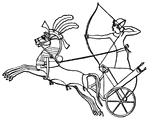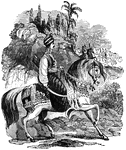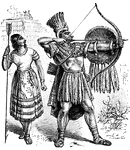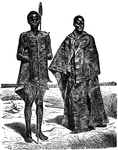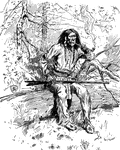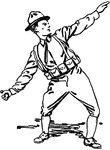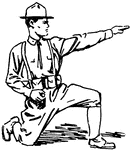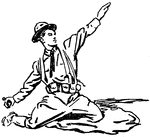
Arma
"Homer describes in various passages an entire suit of armour, and we observe that it consisted of the…

Arma
"Homer describes in various passages an entire suit of armour, and we observe that it consisted of the…

Greek Chariot
"In the battles, as depicted by Homer, the chiefs are the only important combatants, while the people…

Aeneas and Ascanius
"The following cut, taken from one of Sir W. Hamilton's fictile vases, and representing Aeneas followed…

Nudus
"These words, besides denoting absolute nakedness, were applied to any one who, being without an Amictus,…

Ocrea
"A greave, a leggin. A pair of greaves was one of the six articles of armour which formed the complete…

Ocrea
"A greave, a leggin. A pair of greaves was one of the six articles of armour which formed the complete…
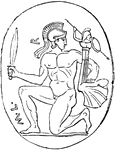
Diomede
"The following cut, from an ancient gem, represents Diomede in the act of bearing away the Palladium."…

Greek soldier
"The early Greeks used a very short sword, as may be seen from the preceding cut. The ancient Homeric…

Torques
"Toques or torquis, an ornament of gold, twisted spirally and bent into a circular form, which was worn…
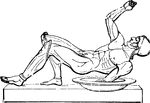
Fallen soldier
"Figure of a fallen warrior, represented among the sculptures now at Munich, belonging to the temple…
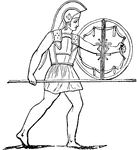
Greek with shield
"In the Homeric times, the Greeks used a belt for the sword, and another for the shield. These passed…
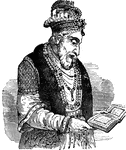
Aurungzrbr
"This sovereign was the last of the Mogul emperors of India who displayed the talent and energy of a…
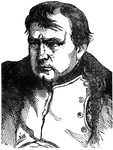
Napoleon Bonaparte
"The celebrated warrior and Emperor of the French, Napoleon Bonaparte, was born at Ajaccio, in the island…

Igorrote
"They have little farms on the foothills of northwestern Luzon, which they plow with carabaos and sometimes…

The Dioscuri
"Castor and Pollux were the offspring of Leda and the Swan, under which disguise Jupiter had concealed…

Denarius
"Denarius of the earliest kind: Having on the obverse a personification of Rome as a warrior with helmet;…

A Frankish Chief in Full Armor
A chief of a Frankish tribe, wearing full battle armor. He stands looking to his right holding a long…

Saint George
This sculpture by the great artist, Donatello, is of a man dressed in armor holding a shield in front…
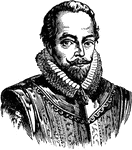
Sir Walter Raleigh
Sir Walter Raleigh, navigator, warrior, statesman, and writer in the reigns of Elizabeth and James I.,…

Roman Soldiers
The distinction between rank and unit type doesn't seem to have been as precise as in a modern-day army,…

Odo of Bayeux
Odo of Bayeux (c. 1036 – February 1097, Palermo), Norman bishop and English earl, was the half-brother…

A Knight of St. John
It takes its origins from the Knights Hospitaller, an organization founded in Jerusalem in 1050 as an…

Richard I
Richard I (8 September 1157 – 6 April 1199) was King of England from 6 July 1189 until his death.…

Battle of Azincourt
The Battle of Agincourt was an English victory against a larger French army in the Hundred Years' War.…
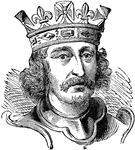
Richard I of England
Richard I (8 September 1157 – 6 April 1199) was King of England from 6 July 1189 until his death.…

Henry V of England
Henry V (16 September 1386 – 31 August 1422) was one of the most significant English warrior kings…

A Puritan Soldier
A Puritan of 16th and 17th century England was an associate of any number of religious groups advocating…

Soldier, Prone
A soldier lying in the prone position. In anatomy,the prone position is a position of the body lying…
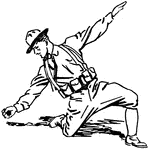
Soldier, Prone, Throwing Grenade
A soldier lying in the prone position, throwing a grenade. In anatomy,the prone position is a position…
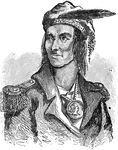
Tecumseh
Tecumseh (March 1768 – October 5, 1813), also Tecumtha or Tekamthi, was a famous Native American…
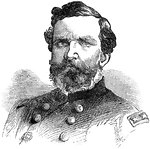
George Henry Thomas
George Henry Thomas (July 31, 1816 – March 28, 1870) was a career United States Army officer and…
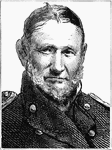
David Emanuel Twiggs
David Emanuel Twiggs (1790 – July 15, 1862) was a United States soldier during the War of 1812…
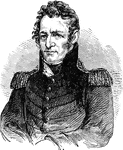
Solomon Van Rensselaer
Solomon Van Vechten Van Rensselaer (August 6, 1774 – April 23, 1852) was an United States Representative…



